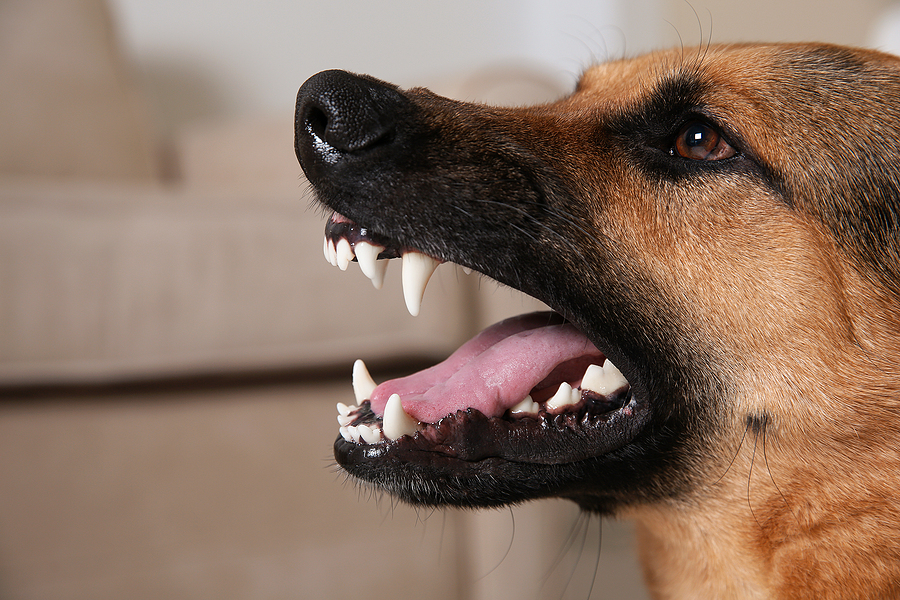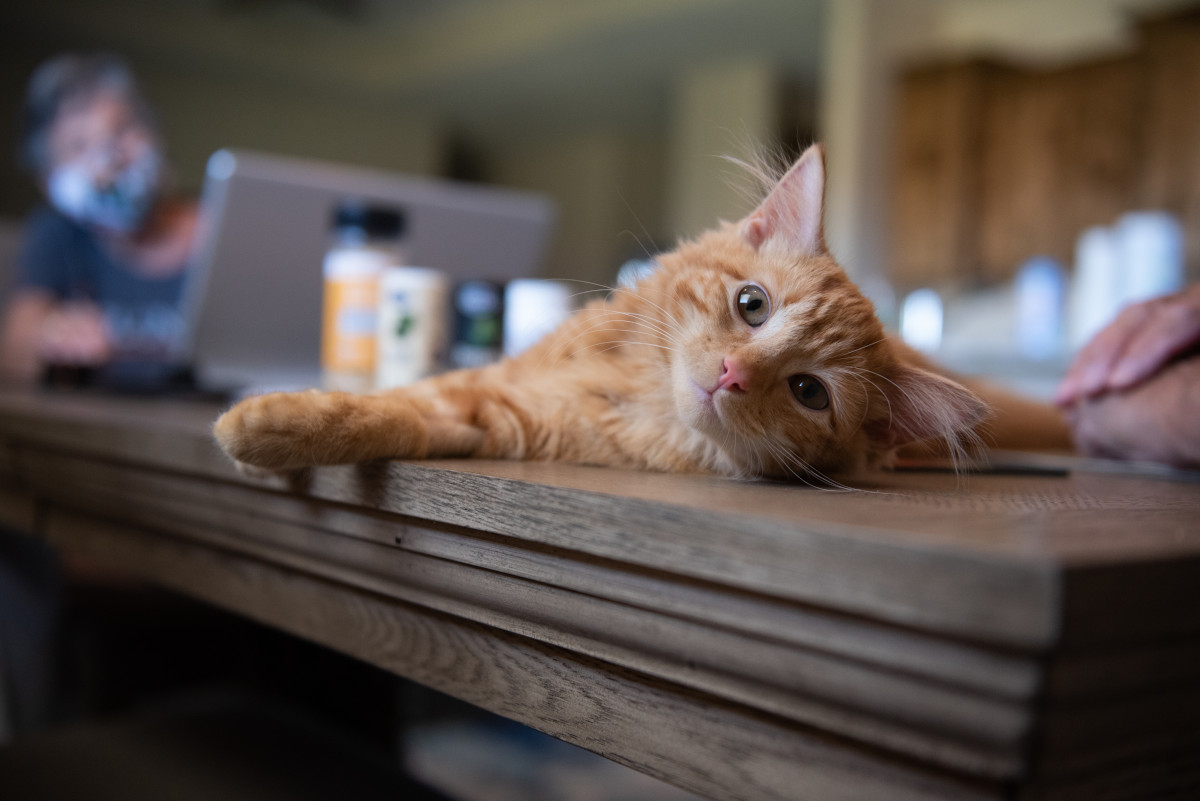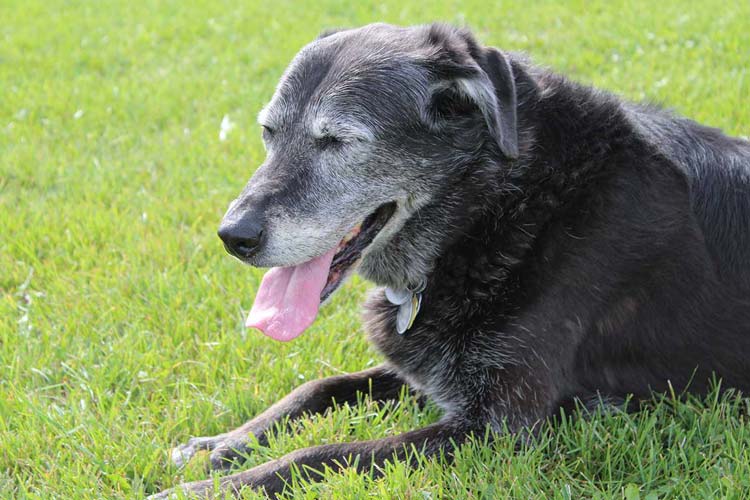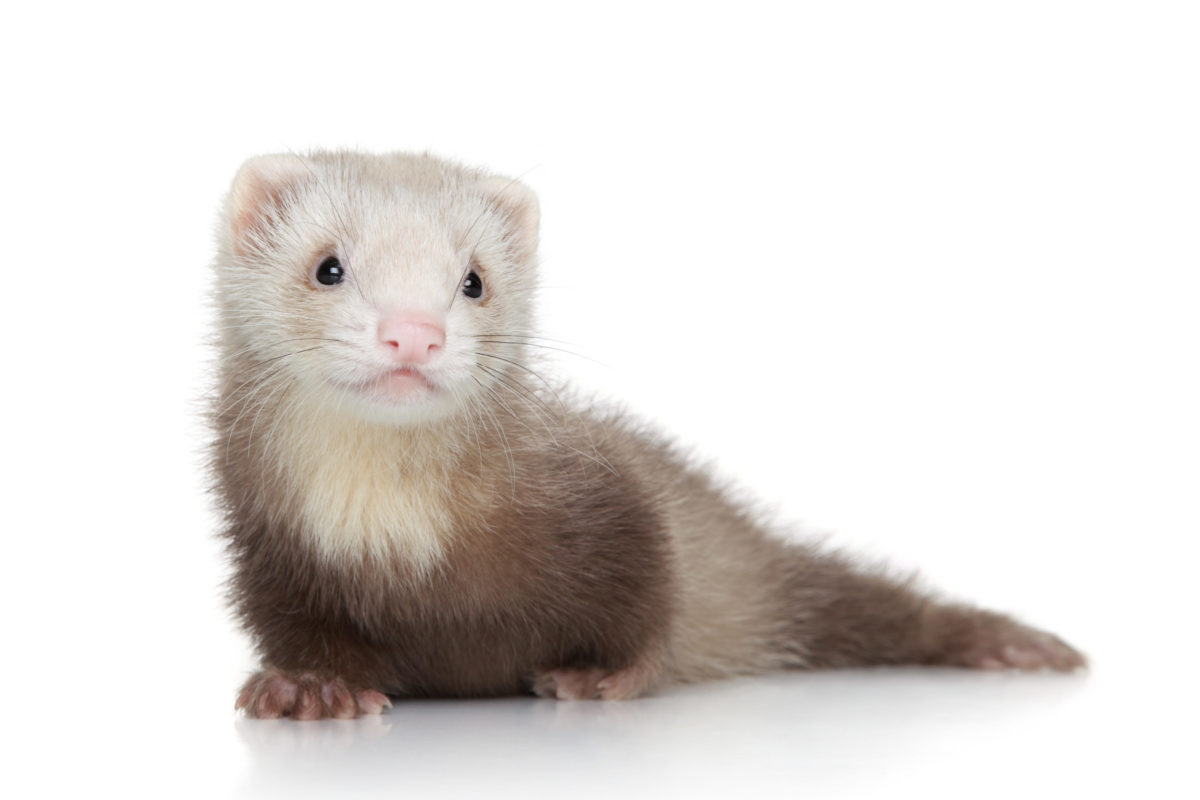An adopted Chihuahua-Pomeranian puppy named Brandy quickly settled into her new forever home, but her owner noticed she was having difficulty chewing her food. A closer look revealed that Brandy’s teeth were so crooked that they were cutting into her gums every time she tried to chew her food.
We all know how much dogs enjoy food and yummy treats. So it’s a real problem when a dog struggles to eat, bites into a lip, and drools consistently. It can be painful, limiting fun and enjoyment. Luckily, these are issues that state-of-the-art veterinary orthodontic dentistry can correct, as the techniques and instruments used by board-certified veterinary dentists mirror what is available for people.
Brandy’s owner took her to see Jan Bellows, DVM, AVDC, ABVP, a dental and companion animal specialist, at All Pets Dental in Weston, Florida. Bellows is one of only 210 board-certified veterinary dentists practicing in the United States. On examination, he determined it was necessary to extract certain baby teeth and straighten Brandy’s bite.
After the extractions, he created a see-through mouth bracket to straighten her teeth.
“We take a model of the mouth and make several snap-on brackets that slowly move the mouth into place to create a very functional bite,” he explained. “Most dogs are unaware of the bracket and carry on as normal.”
The procedure took three months and solved Brandy’s eating issues.
Problem Baby Teeth
While dental issues can occur in all dogs, they are quite common in smaller breeds. Many problems occur when primary teeth (baby teeth) don’t fall out naturally to make room for adult teeth, which then grow in crooked. An overcrowded mouth makes it difficult for the dog to chew and damages gums to the point of bleeding.
Persistent primary teeth can cause serious health issues. The space between baby and permanent teeth gets impacted with hair, food, and other materials, becoming a breeding ground for bacteria and resulting in gum disease. This in turn can cause medical issues in other organs as bacteria spread through the body.
The extraction of baby teeth in large breeds as well as small is typically a routine surgery performed by most veterinarians. However, high-tech corrective dental procedures require the expertise of a board-certified veterinary dentist.
Checking Your Dog’s Mouth
“It’s actually very easy for a dog owner to see if their dog has persistent primary teeth when the adult teeth grow in,” says Dr. Bellows. “However, sometimes even the most caring owners don’t check their dog’s mouth often enough. This could prevent a dog from receiving orthodontic work to correct a situation. An overcrowded mouth makes it difficult for the dog to chew and, in fact, damages the gums,” he says.
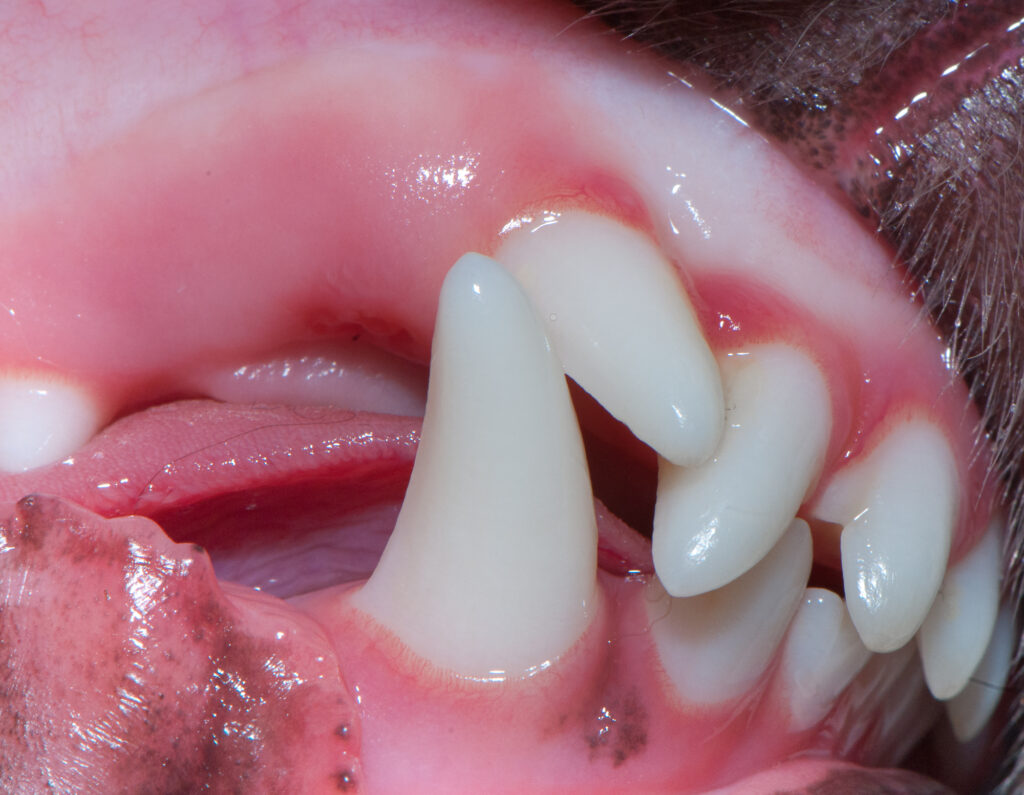
“The best time to extract baby teeth is when the dog is around six months of age. If you miss that time frame, you run the risk of overcrowding. And by then, even if the teeth do fall out by themselves, they will leave damage behind,” Bellows says.
Hereditary Issues
Many breeds of all sizes have hereditary dental issues. They may be born with an overbite (lower jaw too far behind the upper jaw), underbite (the projection of the lower teeth beyond the upper teeth), or a wry bite, also known as mandibular maxillary asymmetry, in which one side of the jaw does not meet up with the other side in the middle of the jaw, so teeth don’t match up. Sometimes, when a dog has an overbite, it causes the lower teeth to make holes in the upper teeth or the hard palate.
“I had a Bull Terrier patient that had a hole in his upper jaw where a lower tooth had penetrated,” Bellows says. “In this case, I had to decrease the height of the lower tooth, treat the nerve, and protect the tooth with a metallic crown.”
Bands and Braces
When a canine patient requires bands to straighten teeth, orthodontics buttons are temporarily cemented, and elastic bands are attached to teeth that need to be moved. The buttons are removed at the end of the procedure. Sometimes the dental work calls for an arch bar to move individual teeth. This is the very latest orthodontic technology.
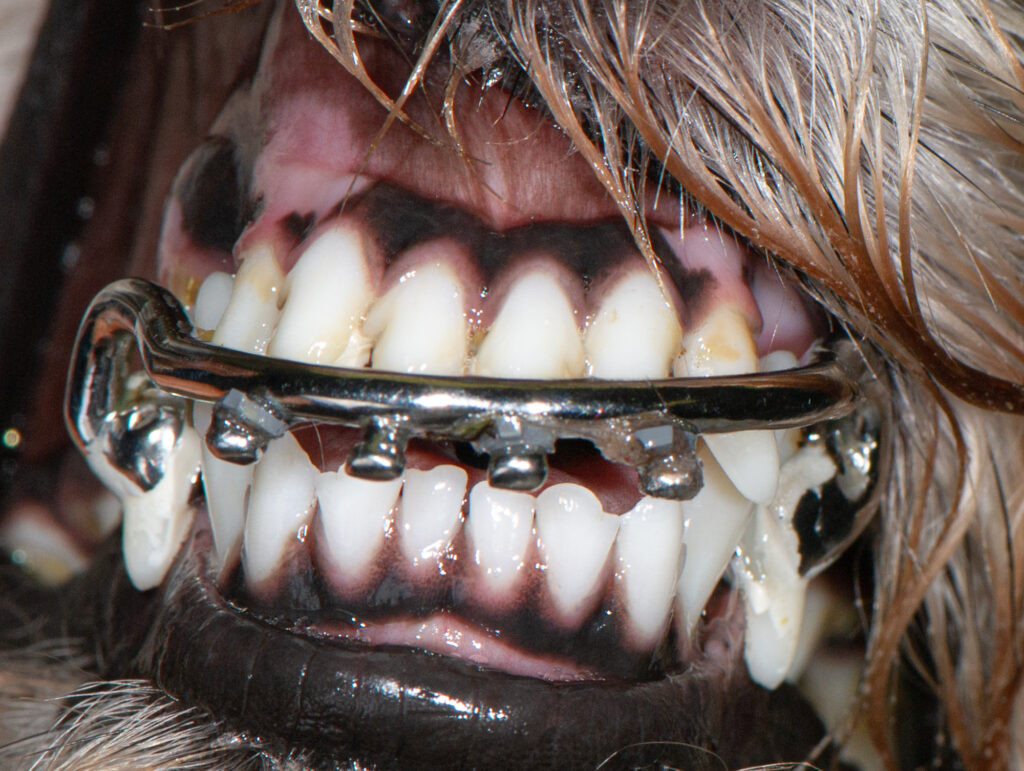
In people, orthodontic procedures can take years to reach conclusion, but canine orthodontic issues are usually rectified in three or four months. But as with people, it requires regular checkups, initially every two weeks and, ultimately, six monthly visits to ensure that everything has remained in place.
Beware Hard Treats
Bellows says one of the biggest causes of fractured teeth in dogs is chewing on hard objects such as hooves, antlers, ice, and bones.
“When a tooth is fractured, it exposes the nerves and causes extreme pain,” says Bellows. “Depending on the extent of the fracture and condition of the tooth it may have to be extracted. However, in many cases, the tooth can be saved through root canal therapy.”
Dental Insurance
Costs can be similar to human orthodontic care. Many pet insurance plans cover extensive dental work. It’s worth reading the fine print to find out to what extent your plan covers orthodontic and fractured tooth care.
A list of board-certified veterinary dentists in the United States is available at the American Veterinary Dental College website.
The Takeaway
Signs that a dog may have dental issues requiring orthodontic repair include not eating, losing weight, frequently pawing at the face, and very bad breath.
An oral examination should be part of every veterinary checkup.
Orthodontic care is not permitted on show dogs unless they are spayed or neutered, to ensure that they don’t pass on hereditary problems to future generations.
This article was reviewed/edited by board-certified veterinary behaviorist Dr. Kenneth Martin and/or veterinary technician specialist in behavior Debbie Martin, LVT.

